By Adam Headley
The Boeing B-29 Superfortress bomber nicknamed Dinah Might struggled to stay in the air on the afternoon of March 4, 1945. She had been shot up during the course of a perilous bombing mission over the Japanese capital of Tokyo and was critically low on fuel. The pilot, Lieutenant Fred Malo, fought to maintain control of the heavy aircraft.
Making it back to base on the island of Tinian in the distant Marianas was a long shot. But providence was smiling on Malo and his 10 crewmen that day. They probably could get to Iwo Jima, a speck of land in the Volcano Islands, 650 nautical miles south of his target for the day’s mission. Malo requested and got permission for an emergency landing on the principal of three airfields located on the porkchop-shaped landmass that was only eight square miles square.
When Iwo Jima came within sight, Malo dropped from the thick cloud cover and slapped down on the strip. A wing snapped a telephone pole as the big silver bomber came to a shuddering stop just 50 feet from the end of the runway. Within a half hour, temporary repairs had been made, the fuel tanks were topped off, and the plane was airborne, headed once again for Tinian.
Dinah Might was the first of many crippled aircraft engaged in the strategic bombing campaign against Japan that found a temporary haven on Iwo Jima, and its crewmen were among an estimated 25,000 American airmen whose lives were probably saved when they avoided ditching in the Pacific Ocean.
On the day of Dinah Might’s salvation, U.S. Marines were still fighting to secure Iwo Jima. For two long weeks they had battled a determined Japanese enemy who was most often burrowed deep in a fortified labyrinth of caves and tunnels and preferred death in combat to surrender. Many of those weary Marines who saw the big bomber descend from the overcast sky and land safely stopped the business of killing for a moment to celebrate life. They cheered loudly and then took up their ugly task anew.
Although the Marines had been told why they were fighting for the desolate island, such events validated their purpose. But three more weeks of bitter fighting lay ahead before Iwo Jima was secured. When the battle ended, the Marines had suffered 6,821 killed and 17,000 wounded. The defending Japanese force of 25,000 men was nearly annihilated. Only 216 prisoners were captured.
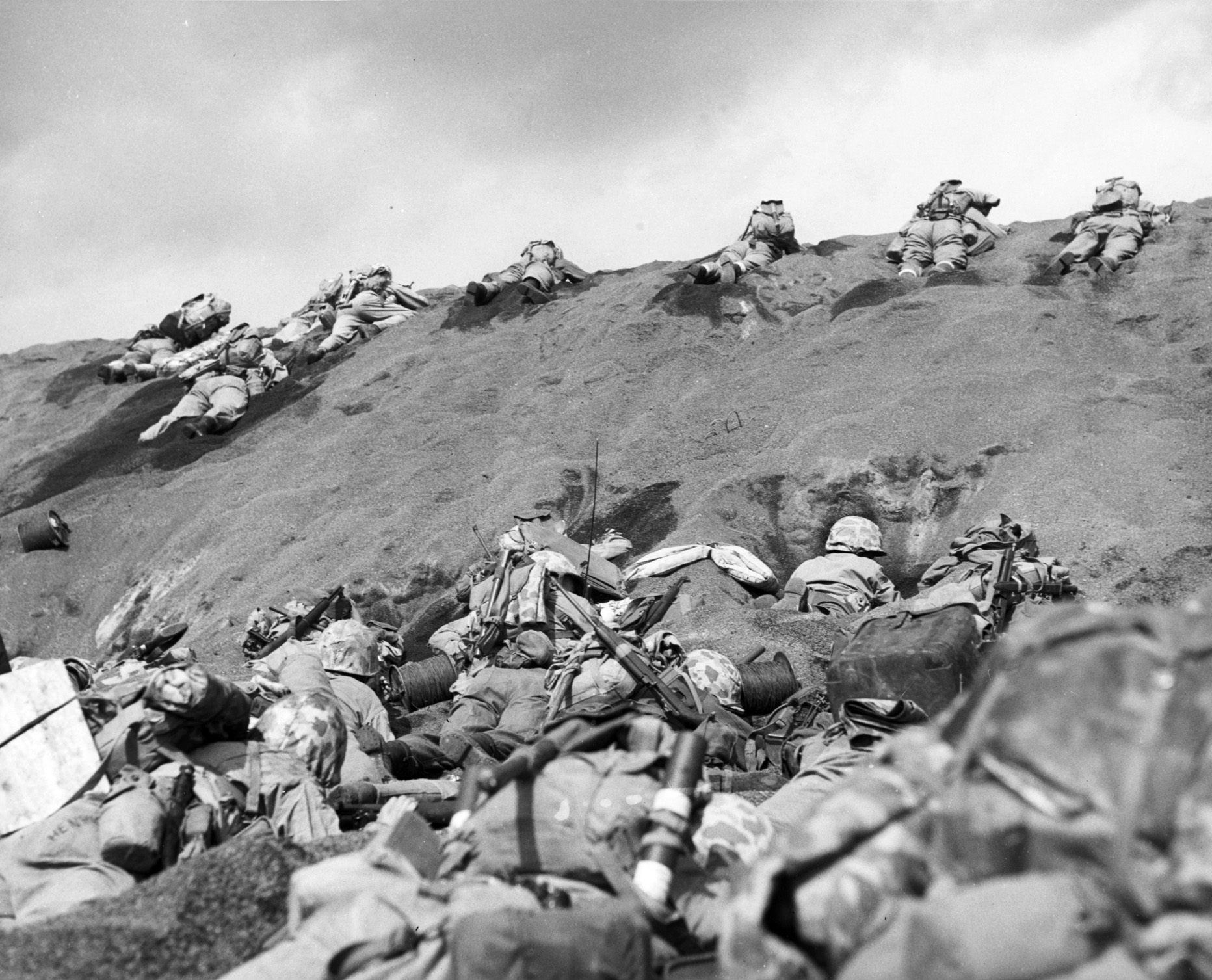
The epic struggle for Iwo Jima was the largest and bloodiest battle in the history of the U.S. Marine Corps. It was a bitter fight with no quarter given and none expected. Iwo Jima would certainly provide an important staging area for the planned invasion of Okinawa scheduled later in the spring of 1945, but there was another immediate reason for its capture.
The seizure of the Marianas in the summer of 1944 provided bases on the islands of Guam, Saipan, and Tinian, from which the big bombers of the U.S. Army Air Forces could attack major Japanese cities and military and industrial targets. Although the Marianas brought the home islands of Honshu, Kyushu, Shikoku, and Hokkaido within range of the B-29s, the flight was still long and perilous.
One of the most direct air routes to Japan drew the bombers dangerously close to Iwo Jima, close enough for Japanese radar to alert antiaircraft units and fighter squadrons that a raid was coming a full two hours before the American planes arrived. Three airstrips, two finished and the other under construction, allowed Japanese fighters to intercept American bombers en route to their targets and on the return flights, when crippled planes made easy kills. Occasionally, Japanese planes even ventured from Iwo Jima to bomb and strafe the American bases in the Marianas.
By November 1944, the stepped-up strategic bombing campaign against Japan was in full swing; however, senior American commanders knew well before that time that Iwo Jima had to be taken.
At 6:45 a.m. on February 19, 1945, Admiral Richmond Kelly Turner barked the order, “Land the landing force!” The naval guns thundered, followed by the air attacks. In half an hour, the LVTs carrying the Marines of the first wave were crunching onto the shoreline. If anything, they were punctual, arriving within two minutes of H-hour, the exact time prescribed.
One Japanese observer noted that the Marines hit the beaches like a tidal wave, swarming ashore. However, most of the enemy gunners did not open fire. They had been instructed to wait until the beaches were literally choked with men and materiel. That order had come from Lieutenant General Tadamichi Kuribayashi, the commander of all Japanese forces on Iwo Jima.
The island was honeycombed with tunnels. Cave entrances were fortified. Machine-gun nests and artillery emplacements were positioned with interlocking fields of fire. Spider holes, large enough for only a single soldier, were dug into the volcanic terrain. The Japanese constructed pillboxes and bunkers that were reinforced with steel, concrete, and heaps of sand to absorb the shockwaves of plunging naval fire.
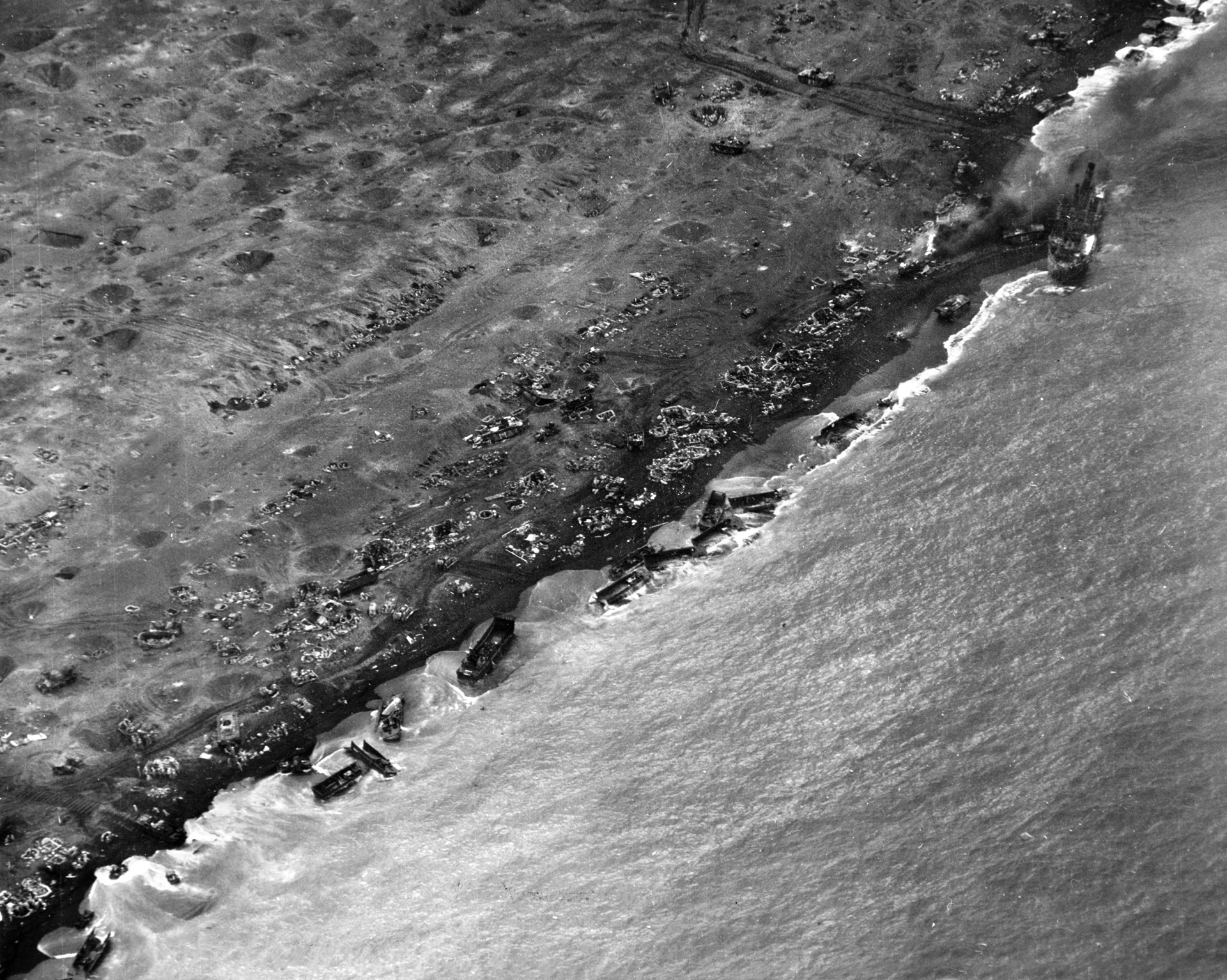
A veteran of the conquest of Hong Kong, Kuribayashi had served as the chief of staff of the 23rd Army and then as commander of the prestigious Imperial Guard Division in Tokyo. He embraced the concept of defense in depth and planned to fortify and defend the interior of the island and Mount Suribachi, a 550-foot extinct volcano at its southwestern tip, exacting a heavy toll. He exhorted his troops to take 10 American lives for every Japanese soldier killed in the desperate fight to come.
More than 5,000 Marines came ashore amid crashing surf and moved inland. In an hour and a half, the 28th Marines had covered the 700 yards to the far shore, taking increasing casualties along the way. The 27th Marines moved steadily to the fringe of Airfield No. 1 by noon. Coming off the Yellow invasion beaches, the 23rd Marines was held up by a pair of pillboxes during its advance toward the eastern edge of the airfield. No armored support was forthcoming, but they slugged away.
Led by Lieutenant Colonel Justice M. Chambers, the 3rd Battalion, 25th Marines was hit hard by enemy fire as it attempted to move up the sloping Blue beaches toward the Rock Quarry. Nearby, the 1st Battalion, 25th Marines had its own trouble with the terrain and increasing Japanese small-arms fire, managing about 300 yards in 30 minutes.
Kuribayashi watched the drama unfold. Just before 10 a.m., he passed the order to unleash a shattering barrage of artillery, mortar, and machine-gun fire on the invasion beaches clogged with Marines and their machines. Veteran Marines remember the ensuing rain of shells as the most intense they ever experienced. Shells burst along the length of the 3,000-yard beachhead.
For an hour, the Marines on the beaches were pummeled. As they were pinpointed however, a number of the Japanese positions were silenced by naval gunfire and planes that strafed and dropped bombs and napalm canisters.
The difficult first day on Iwo Jima left 2,400 Marines killed or wounded. Thirty-five more murderous days were to follow before the island was declared secure. Among those killed early in the action was Gunnery Sergeant John Basilone, a recipient of the Medal of Honor for his heroism on Guadalcanal. While leading a machine-gun platoon of the 1st Battalion, 27th Marines in an attack on the edge of Motoyama Airfield No. 1, Basilone was fatally wounded by an exploding mortar round.
Both Generals Clifton Cates and Keller Rockey, commanders of the 4th and 5th Marine Divisions respectively, had committed their reserves, the 24th and 26th Marines, by evening on the 19th, and the cliffs surrounding the Rock Quarry were in the hands of the 3rd Battalion, 25th Marines, which lost 22 officers and 500 riflemen in the day-long fight. After dark, Kuribayashi dispatched teams of infiltrators to harass the Marines, many of whom expected a banzai charge that never came.
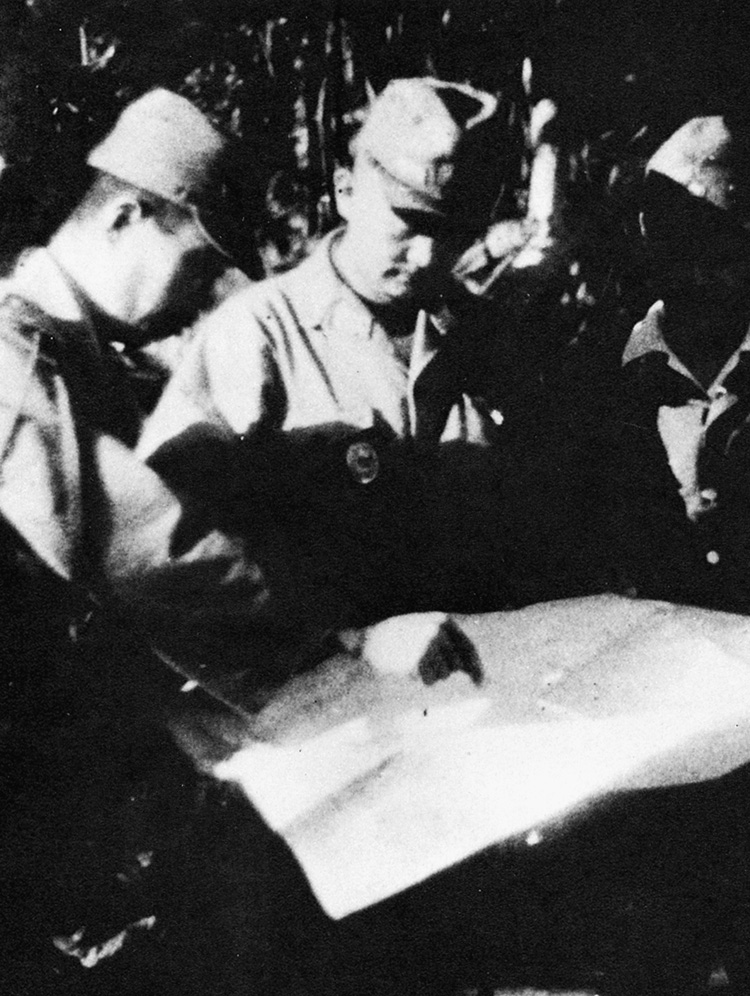
Rain began to fall on February 20, and bad weather disrupted reinforcement attempts. The waterlogged 21st Marines came in on February 21 to relieve the 23rd Marines, who had secured Motoyama Airfield No. 1. The 26th and 27th Marines occupied the west side of the airfield, while the 23rd covered 800 yards from the east under murderous fire.
Fighting raged on the Rock Quarry rim. On the 22nd, Lieutenant Colonel Chambers took a Japanese bullet in the chest while urging his 3rd battalion, 25th Marines forward. When Chambers was shot, all three battalion commanders of the 25th Marines had been wounded before the Rock Quarry was taken. He survived to receive the Medal of Honor.
The 28th Marines, commanded by Colonel Harry B. Liversedge, prepared to renew its mission to take Mount Suribachi and dislodge the 2,000 enemy soldiers who inhabited a maze of interconnected tunnels, caves, and strongpoints along the high ground. Nicknamed “Harry the Horse,” Liversedge was well aware that his Marines had lost 400 casualties on the first day of fighting; however, the 1st and 2nd Battalions had reached the base of the mountain. While the 3rd Battalion successfully battered its way to the foot of Suribachi on the 20th, the 1st and 2nd Battalions slipped around the flanks in an attempt to surround it and then entrenched.
Just to reach the positions they occupied, the 28th Marines were obliged to neutralize as many as 70 concrete blockhouses and pillboxes that dotted the base of Suribachi. At least another 50 strongpoints were positioned to open fire at them during the first 100 feet of their ascent. Nevertheless, on the third day of the battle Harry Liversedge’s Marines were ready to directly assault Mount Suribachi.
The 28th Marines moved out. Naval gunfire and 105mm artillery assisted the 1st Battalion in its ascent along the west face, but the fighting was savage. Marines placed covering fire on the mouths of caves while intrepid comrades rushed forward and threw satchel charges inside or flipped grenades into gun ports. The Japanese were blasted from concealed positions or sealed inside.
The battle for Suribachi continued throughout the next day as the 28th Marines inched upward. At the end of the day, patrols from the 1st and 2nd Battalions reached the extreme southwestern tip of Iwo Jima at Tobiishi Point.
At 8 a.m. on February 23, the 25 riflemen of the 3rd Platoon, Company E, 2nd Battalion, 28th Marines—along with a few replacements from other Company E outfits that raised their number to 40—moved out with orders to reach the summit of Suribachi. Under the command of 1st Lt. Harold G. Schrier, the Marines picked their way forward. Japanese snipers took shots at them, and individual enemy soldiers jumped up from spider holes. The Marines tossed grenades, fired into the mouths of caves, and cut down those enemy soldiers that lunged toward them.
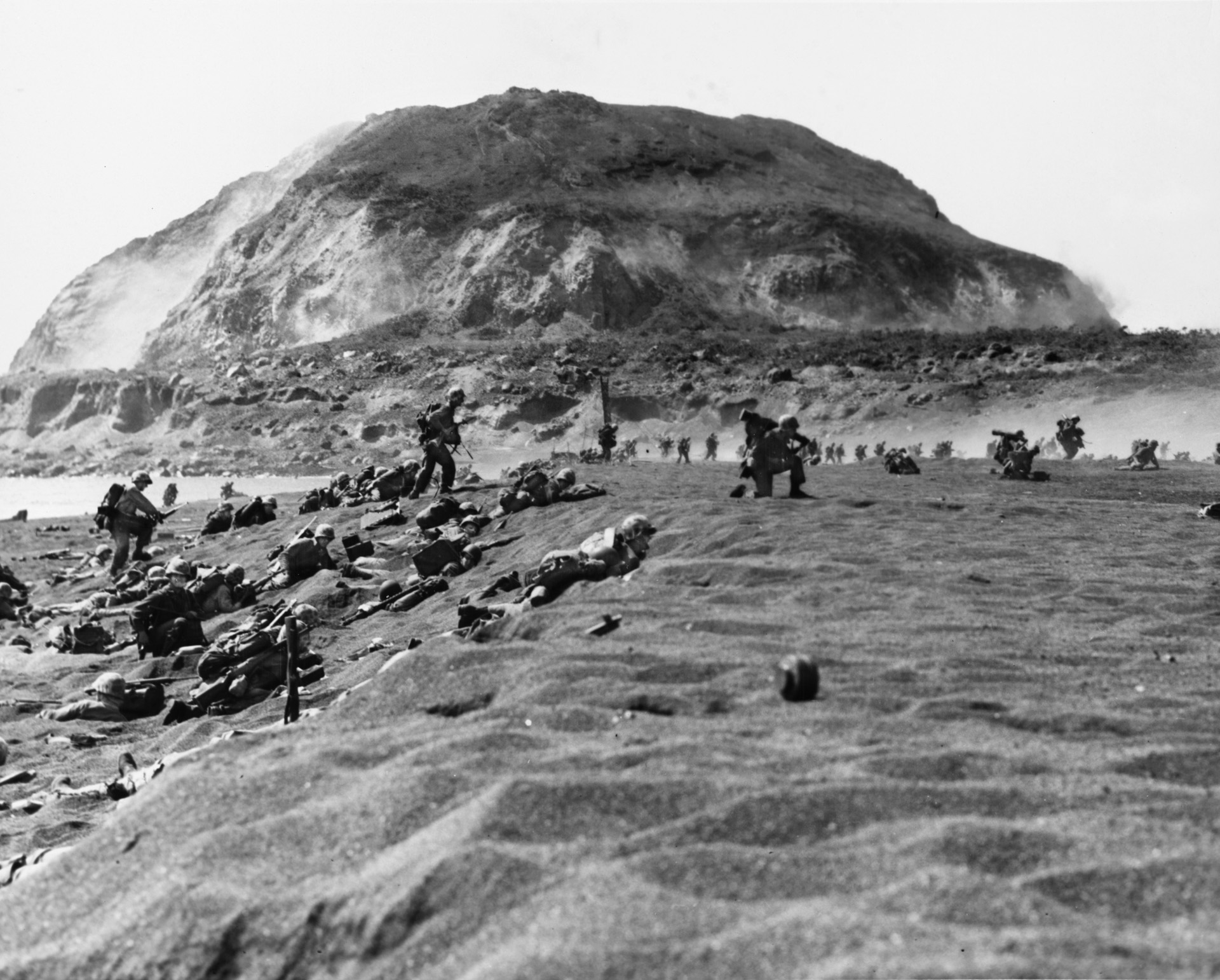
Schrier’s patrol, visible across the island and some distance out to sea as it snaked its way to the top of the mountain, had specific orders to raise the U.S. flag, in this case a small 54-inch by 28-inch example of Old Glory, from the summit. Marine photographer Louis R. Lowery recorded their progress, asking them to stop once and display the flag as he snapped the shutter of his camera.
Once they fought their way to the crater, the Marines looked around for a suitable flagpole and found a length of pipe. Schrier and three other Marines lashed the flag to the pipe. At approximately 10:30 a.m., the makeshift pole was planted and the small flag snapped in the breeze. The Marines below began to cheer. Whistles blew aboard ships.
General Holland Smith was escorting Secretary of the Navy James V. Forrestal, who had come to observe the operations. When the secretary saw the banner, he exclaimed, “The raising of that flag means a Marine Corps for another 500 years!”
Bursts of rifle fire and a few grenades were heaved from hidden positions. A Japanese officer sprinted into the open wielding a sword. One Marine stepped forward with his .45-caliber pistol, but it misfired and hedove out of the way, and the Japanese officer was riddled by bullets from a dozen Marine rifles.
About three hours after Schrier’s patrol successfully completed its mission, Lieutenant Colonel Chandler Johnson, commander of the 2nd Battalion, 28th Marines, decided the original flag was too small. A runner was sent to the beach to find a larger flag. He returned from the LST-779 with a replacement that measured eight feet by four feet, eight inches. A second patrol delivered the flag to the summit of Suribachi, and Associated Press photographer Joe Rosenthal decided to follow along.
When Rosenthal reached the crater, the raising of the second flag was already in progress. He tried not to obstruct the view of Marine William Genaust, filming with a movie camera. “Hey Bill! There it goes!” he yelled.
“Out of the corner of my eye, I had seen the men start the flag up,” Rosenthal remembered. “I swung my camera around and shot the scene. That is how the picture was taken, and when you take a picture like that, you don’t come away saying you got a great shot. You don’t know.”
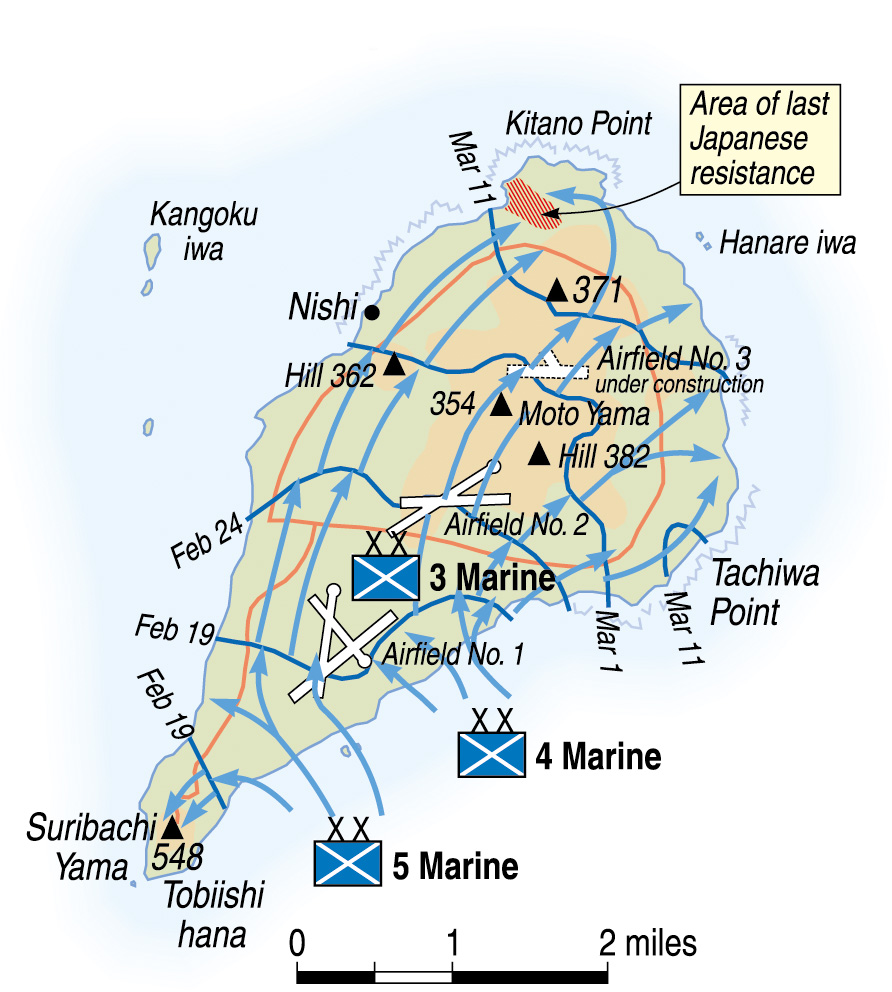
Rosenthal captured on film a moment that defined the courage and fortitude of the U.S. Marine Corps and the will of a nation to see the war through to final victory. The image remains the most iconic symbol of the American fighting man in World War II, and perhaps the most iconic war photograph ever taken.
Since the enduring photograph captured the second flag raising, some observers declared that it had been staged. They were wrong. Rosenthal’s film was flown to Guam and developed. Associated Press editor John Bodkin knew it was something special and blurted, “Here’s one for all time!” He flashed the photo to the AP office in New York, and within 18 hours of the event it was in distribution.
Although the moment of the flag raising had electrified the Marines on Iwo Jima and those within sight of it at sea, the Japanese were far from finished.
The fall of Suribachi was a serious blow to Kuribayashi’s scheme of defense. Still, he took cold comfort in the performance of his command, particularly the skillful handling of his artillery by Colonel Chosaku Kaido, whose prominent blockhouse on the flat Motoyama Plateau, an area the Marines nicknamed the Turkey Knob, seemed impregnable to American fire. Marines came to grudgingly respect the fighting prowess of the Japanese soldier on Iwo Jima, and most agreed that Kuribayashi, who they were unaware was even on the island until intelligence confirmed his presence on February 27, was the best defensive commander they faced in the Pacific.
General Schmidt’s northward thrust on Iwo Jima began on February 24, and the enemy’s main defensive line awaited. Motoyama Airfield No. 2 proved a killing ground. Everywhere the coordinated Marine offensive broke down into individual and squad size actions.
On the same day, General Schmidt moved his headquarters to Iwo Jima from a command ship offshore. During the next several days, the 3rd Marine Division’s 12th Artillery joined the 13th and 14th Artillery Regiments of the 5th and 4th Marine Divisions on the island. The last major infantry reserve was the 3rd Marines, under the command of Holland Smith at the expeditionary force level, and Schmidt made the first of several requests for the unit’s release, but these troops were never committed despite the need for reinforcements. Eventually, in a controversial move, Holland Smith ordered the 3rd Marines to retire to Guam.
For more than a week, the Marines struggled to take control of Motoyama Airfield No. 2 and the series of hills and ridges to the north. Fire support was problematic as the Marine artillery was often too light to deal with the well-entrenched Japanese.
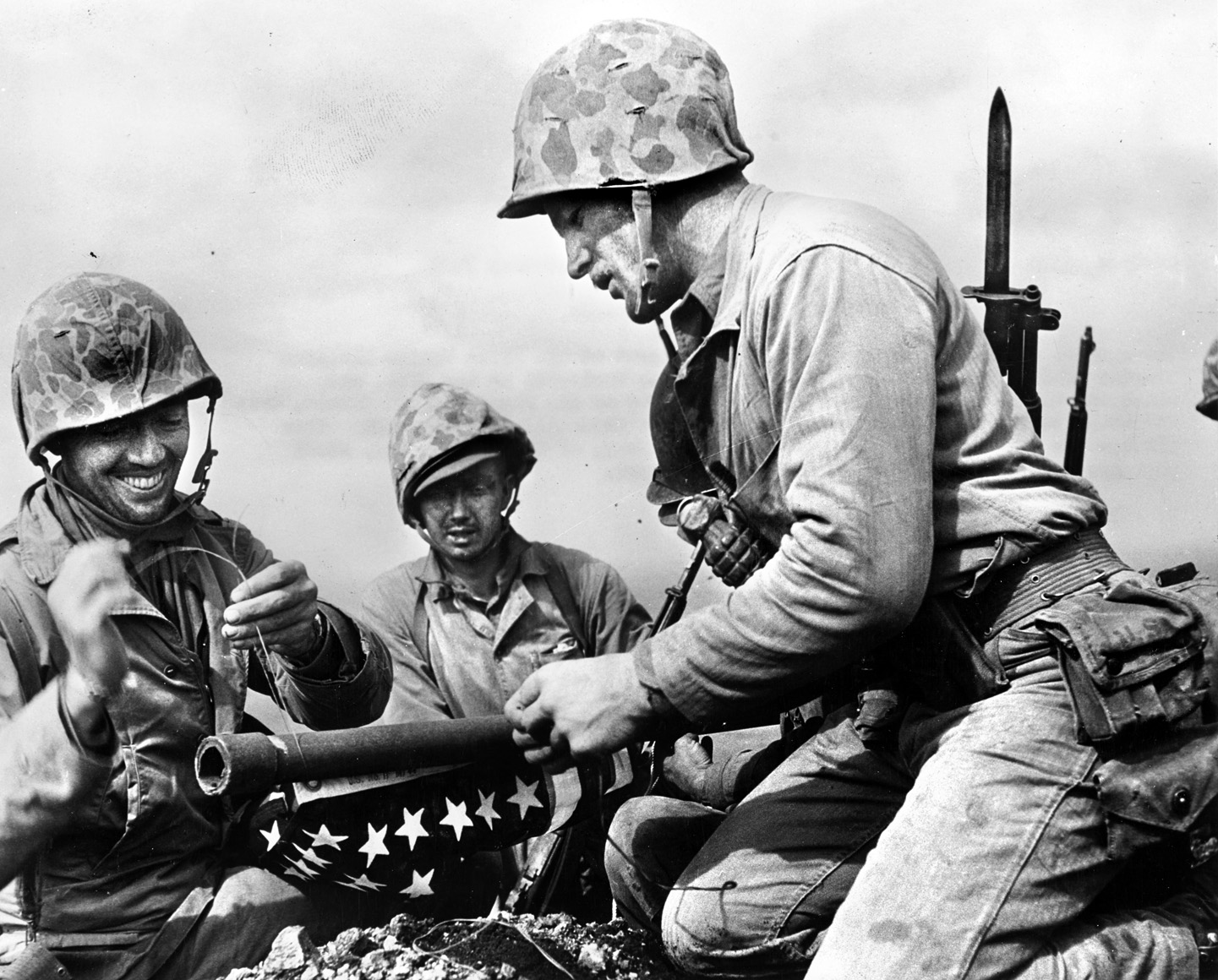
When elements of the 3rd, 4th, and 5th Marine Divisions turned north to assault Motoyama Airfield No. 2, they were also well aware that their next objectives would include the high ground that lay beyond. During 10 days of heavy fighting, the Marines advanced about 4,000 yards and absorbed a staggering 7,000 killed and wounded.
Elements of the 26th, 27th and 28th Marines fought for several days to occupy Nishi Ridge and then secure Hill 362-A, where the 28th took 200 casualties. On February 27, the 1st Battalion, 27th Marines advanced on the high ground and ran into a complex of Japanese pillboxes spewing machine-gun bullets. A halftrack mounting a 75mm gun was called up to blast several of the pillboxes.
Individual Marines with flamethrowers and satchel charges were obliged to take care of the rest, and one of these was 1st Lt. Clair Voss, whose 1st Platoon, Company A pushed ahead to a small knoll and was raked by Japanese fire from several directions. Voss gathered hand grenades and demolition charges and managed to work his way to one of the pillboxes. He tossed a grenade into a firing slit, and the machine guns stopped. Then, he climbed atop the concrete fortification and placed a charge that wrecked the structure with the ensuing explosion. Voss was wounded but survived and received the Navy Cross for his effort. Eight Marines of Company A were killed and 50 wounded on the hill. By March 3, the 5th Marine Division had been in combat for 12 days and taken horrific casualties, 1,000 dead, 349 wounded, and 49 missing.
On the same date, the 26th Marines captured Hill 362-B on the left flank as Company F of its 2nd Battalion took the brunt of the casualties with 47 killed or wounded including the last of the platoon commanders who had landed with the 2nd Battalion on February 19. Some units advanced as far as 600 yards to take the hill, and during the night more than 100 Japanese infiltrators were killed approaching the new Marine positions. The 26th Marines suffered 500 casualties from dawn to dusk at Hill 362-B, and five Medals of Honor were earned in a single day on the island.
Across Iwo Jima, the deadly Japanese concentrations of troops and firepower received colorful nicknames. While the 3rd Battalion, 25th Marines fought at the Rock Quarry, the 28th Marines pushed through a contested area at the base of Suribachi that they dubbed the Jungle of Stone. Now, in front of three Marine divisions that were already depleted, rose several prominent terrain features that would live as infamous reminders of the bloody combat. The defenses in the north of the island were formidable, including Hill 382, the Amphitheater, Turkey Knob, and the small village of Minami. Collectively, these Japanese strongpoints were referred to as the “Meat Grinder.”
During the first week of March, the Marines had breached Kuribayashi’s main line. However, the price had been high. Despite grievous losses, the Marines were making painful gains. Kuribayashi relocated his command post from the compromised center of Iwo Jima to the north, where his troops would continue to resist.
From February 26-28, the 23rd Marines fought to capture Hill 382, a steep warren of machine-gun nests, bunkers, and pillboxes, along with a bombed-out Japanese radar station on its crest that had been repurposed as a strongpoint. Japanese tanks were pulled into crevices that obscured them from vision and played their 47mm guns along the avenues of approach.
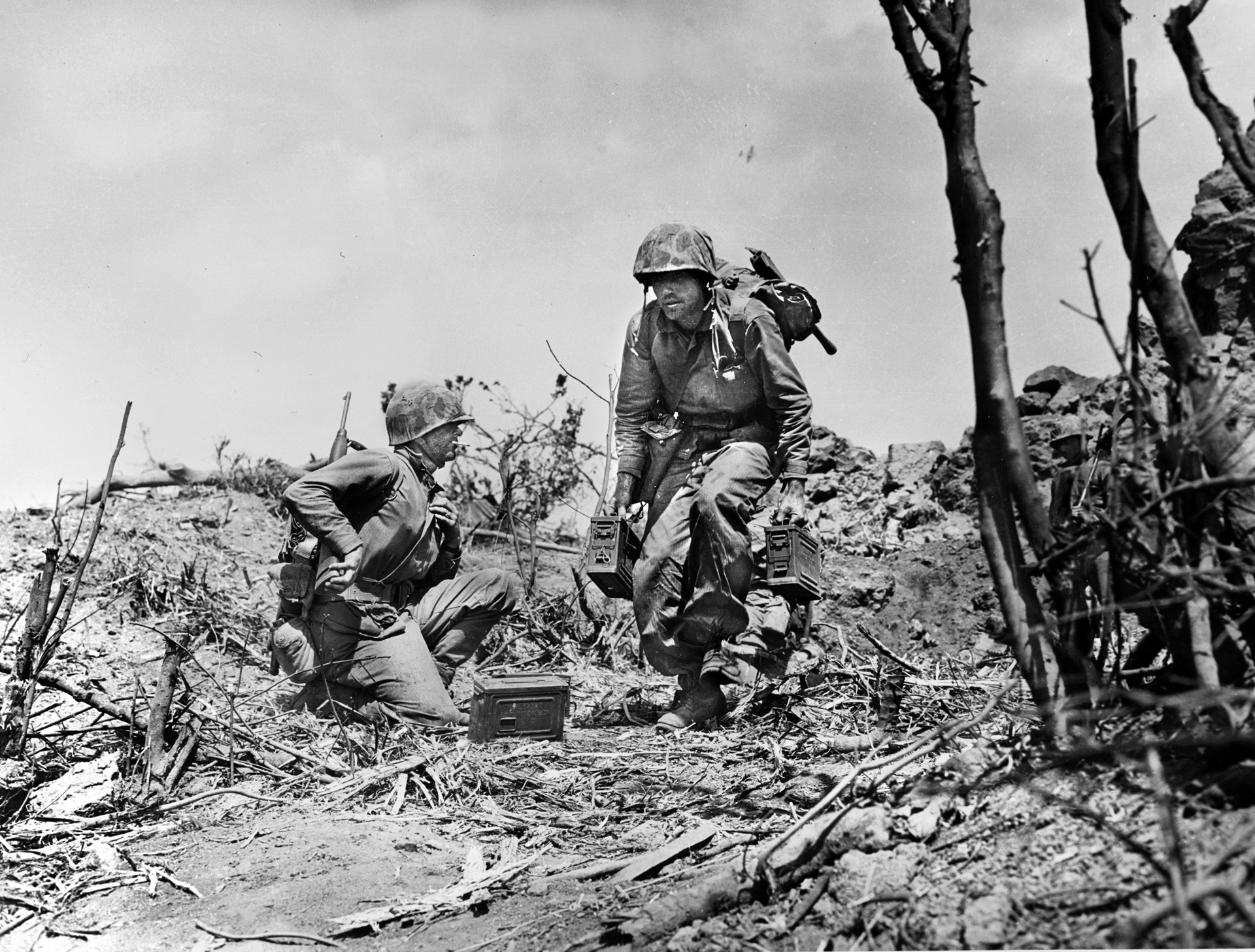
On March 1, the 2nd Battalion, 24th Marines relieved the 1st Battalion, 23rd Marines at Hill 382, and by the afternoon of the following day the Americans had finally claimed the summit. However, the 2nd Battalion was in need of rest and replacements as Company E had lost four company commanders in a brief but deadly timeframe. Still, the 4th Marine Division pressed forward through the Amphitheater and against the elevation of Turkey Knob, which rose 600 yards south of Hill 382. The Japanese had fortified it with an observation post and communications center ringed by machine-gun and mortar positions.
Down the slope of Turkey Knob, the ground formed a natural bowl—nicknamed the Amphitheater. The Japanese built three concentric defensive rings on the southern slope of Turkey Knob, and their guns swept the open ground.
While fighting raged around Hill 382, the 4th Marine Division continued to batter away at the Amphitheater. By the end of February, the 23rd and 25th Marines had reached the hills north and south and were in position to outflank the deadly bowl and Turkey Knob as well. In a single day flamethrower tanks spewed 1,000 gallons of fuel against enemy strongpoints, and on March 2, the Marine pincers reached to within 65 yards of each other in an attempt to close the ring before a torrent of Japanese artillery shells forced them to withdraw.
Nearly two weeks of heavy fighting were required before the 4th Marine Division subdued the salient formed by the double envelopment around the two centers of resistance. At the same time, the division made progress on both flanks.
To the Japanese, it was clear that with every day their grip on the Amphitheater and Turkey Knob were slipping, and on the evening of March 8 the local commanders abandoned defense in depth. Pulling out of their prepared defenses, the Japanese staged an improvised attack that included an old-style banzai charge. While many of the enemy soldiers screamed and charged, others used the terrain to creep toward the seam between the 23rd and 24th Marines. Some Japanese soldiers even dragged stretchers and yelled, “Corpsman!” in an attempt to infiltrate the Marine line. A mortar and artillery barrage preceded the attack, which was chewed up, leaving 650 dead Japanese soldiers littering the ground. The 4th Marine Division was able to reach the east coast of Iwo Jima within 48 hours.
As evening fell on March 10, the 4th Division’s right flank had advanced about 1,000 yards with the 2nd and 3rd Battalions, 25th Marines and the 2nd Battalion, 24th Marines serving as a hinge for the closing of a great door. The remainder of the division, including the 1st and 3rd Battalions, 25th Marines, the 1st and 3rd Battalions, 24th Marines, and the 2nd Battalion, 23rd Marines, had fought their way northeast, east, and then southeast, squeezing the Japanese into a perimeter ever closer to the beach.
In the process, the Marines had fought through and around heavily defended hills and then the formidable defenses at Hill 382, the Amphitheater, Turkey Knob, and Minami village while pushing against the strong defenses northeast of Hill 382 quite nearly to the ocean. After days of hard fighting, General Cates formed a provisional battalion within the 4th Marine Division and charged its commander, Lieutenant Colonel Melvin Krulewitch, with cleaning out Japanese strongpoints that had been bypassed.
The general Marine advance northward on Iwo Jima gained impetus during the first week of March. The 3rd Marine Division battled in the center at Hills Peter and 199-Oboe and then moved on to Motoyama village, Hill 362-C, and a rock-strewn area known as Cushman’s Pocket.
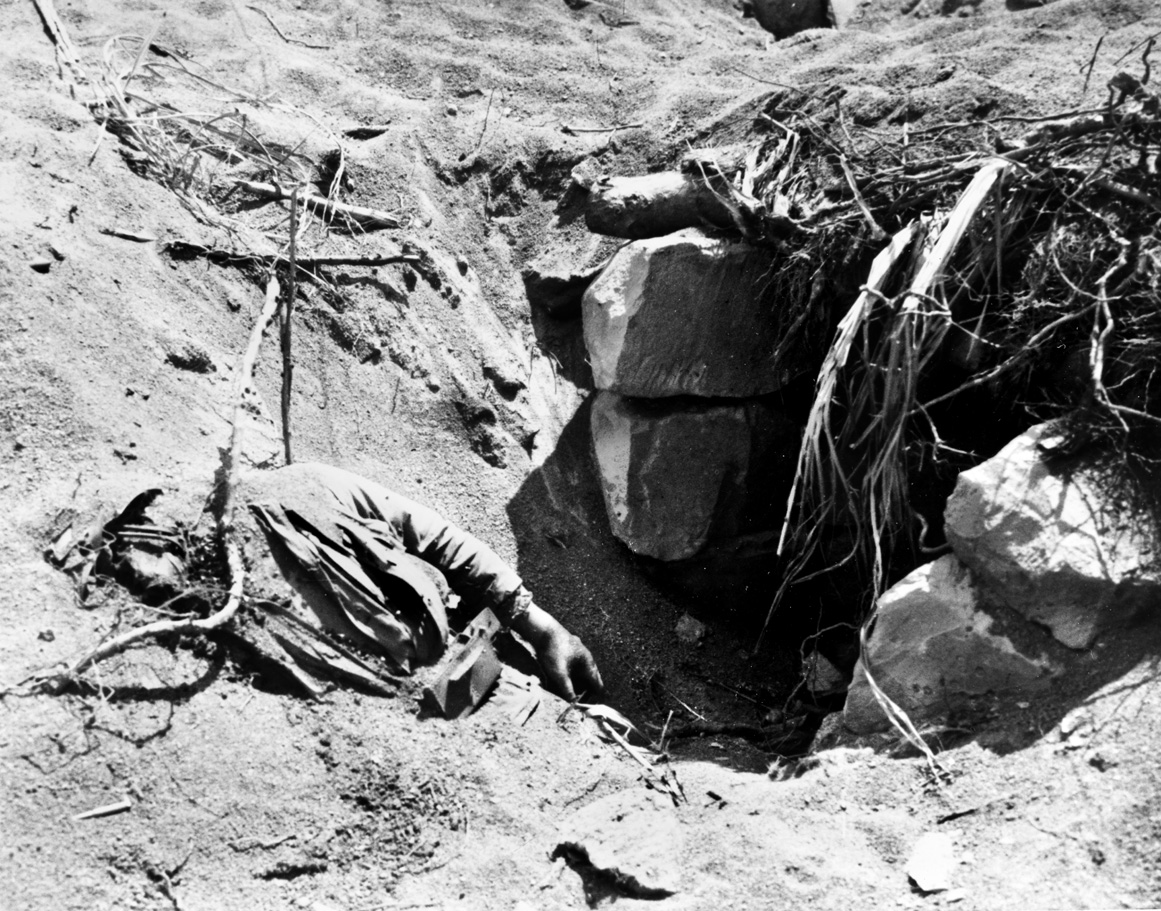
On March 2, east of Motoyama Airfield No. 3, Lt. Col. Robert E. Cushman and the 2nd Battalion, 9th Marines got into a brawl with diehard Japanese forces. The Marines encircled the enemy stronghold, and after two weeks of brutal combat, the area was clear of Japanese. Two of Cushman’s companies, E and F, were decimated with only 10 survivors between them.
The 2nd Battalion, 21st Marines hit Hill 362-C, located beyond Motoyama Airfield No. 3, on March 6 in a resumption of five frustrating days of combat. It was another day of agonizingly slow progress as naval gunfire and artillery barrages failed to loosen the Japanese hold. Company G reached the top of neighboring Hill 357 but lost contact with the unit on its flank and was compelled to pull back.
Finally, just after 2 p.m. on March 7, Company K, 3rd Battalion, 9th Marines seized Hill 362-C, fulfilling its mission without artillery to avoid tipping off the enemy defenders.
Before dawn, as Company K Marines were clearing what they initially believed to be Hill 362-C, it was discovered that they were actually occupying Hill 331. Their objective for the day remained 250 yards distant. The direction of the attack, however, was correct. As the sun rose, the Marines advanced at 7:15, following a 10-minute artillery barrage. Now alert, the Japanese poured fire into the Marines from their front and flanks, but the attack succeeded.
For three more days, the 3rd Marine Division fought to reach the northeastern beaches on Iwo Jima. Supported by naval gunfire and advancing across broken terrain, the Marines met resistance that was substantial at first, and then began to ebb. Elements of Company A, 1st Battalion, 21st Marines reached the coast on March 10 and filled a canteen full of seawater, promptly sending it back to V Amphibious Corps headquarters with a note attached that read, “For inspection, not consumption.”
That evening, General Graves Erskine was able to report that organized resistance had ended in the 3rd Marine Division zone. Scattered Japanese resistance, particularly along the cliffs continued for more than a week. During its two-week drive through the interior of Iwo Jima and then to the coast, the 3rd Marine Division lost 3,563 casualties.
After the capture of Hill 362-B, the 5th Marine Division continued to advance to the north and east, jamming the Japanese into an area around Kitano Point in the extreme north. The division’s final push on Iwo Jima began on March 11. Artillery and naval guns barked for nearly an hour, but the going was still rough. On March 14-15, the Marines gained roughly 1,000 yards, and then on the 16th the 21st Marines, fresh out of a job in their previous location, came alongside the 26th Marines to grind out another 400 yards.
During the heavy fighting on March 13, the 1st Battalion, 27th Marines drove forward 300 yards but was stopped cold by enemy fire coming from a draw in its immediate front. The battalion settled in for the night, but shortly after dark one of the few heavy guns the Japanese had on Iwo Jima began to pound the Marines in their foxholes. The Japanese had abandoned the 8-inch gun, but crept back to open fire.
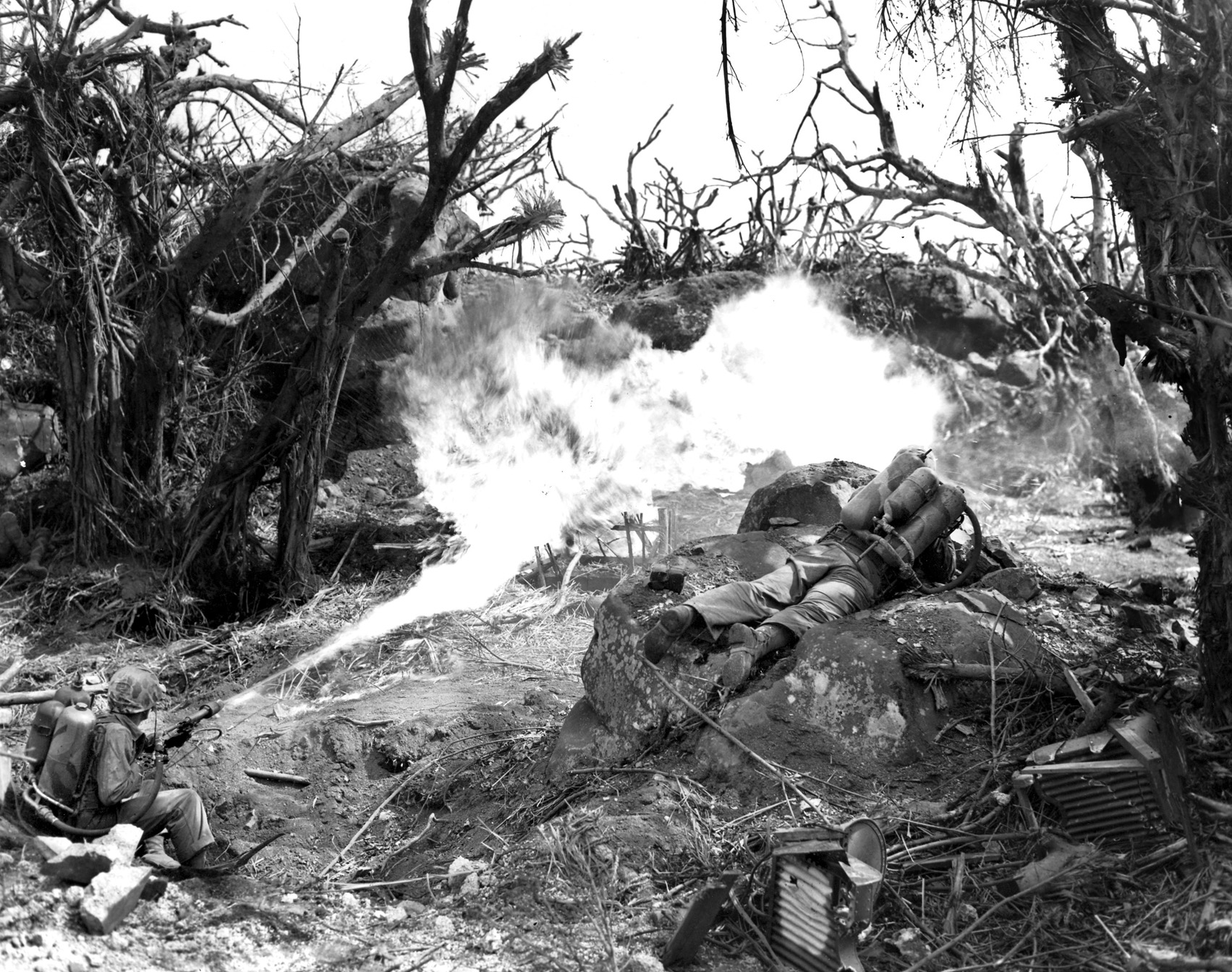
Carrying a bazooka, Pfc. Donald Schmille set out to silence the enemy weapon. When the Japanese soldiers saw movement, they opened up with rifles, machine guns, and a fusillade of hand grenades. Schmille was undeterred. When he reached an adequate vantage point, he stood up to acquire his target and blasted the position. Schmille undoubtedly saved many Marine lives. He was later awarded the Navy Cross.
By March 19, the 27th and 28th Marines had reached a reached a treacherous 700-yard box canyon on the northwest coast of Iwo Jima. The Marines referred to it simply as the Gorge or Death Valley. It took more than a week of fighting to subdue the 500 Japanese holed up there. M4 Sherman tanks equipped with bulldozer blades cut roads into the contested area, and tanks and halftracks leveled their 75mm guns at Japanese emplacements from point-blank range. Enemy resistance in the Gorge finally came to a violent end on March 25, the 35th day of battle for Iwo Jima.
As the Marines closed in on the remaining enemy troop concentrations, surrender appeals were broadcast in Japanese. Kuribayashi, though, was prepared to die. Although not known, it is believed that he committed suicide on the night of March 25. Some accounts, however, suggest that he died leading a final, desperate attack near Motoyama Airfield No. 2.
The following day, although scattered pockets of resistance were still active across the island, Iwo Jima was declared secure.
Twenty-seven Medals of Honor were presented for gallantry above and beyond the call of duty at Iwo Jima. Twenty-two of these went to Marines, four to Navy Corpsmen, and one to the commander of a Navy landing craft. Fourteen of the Medals were posthumous, and more than one quarter of the 80 Medals of Honor awarded to Marines during World War II were earned at Iwo Jima.
Summarizing the character of the great battle, Admiral Nimitz at far-off Pearl Harbor, declared, “On Iwo island, uncommon valor was a common virtue.”
Perhaps Nimitz came nearest to capturing the essence of Marine bravery and sacrifice at Iwo Jima, but even these stirring words resonate as something of an understatement.
Adam Headley is a longtime student of World War II history and has written for numerous publications. He lives in east Tennessee.
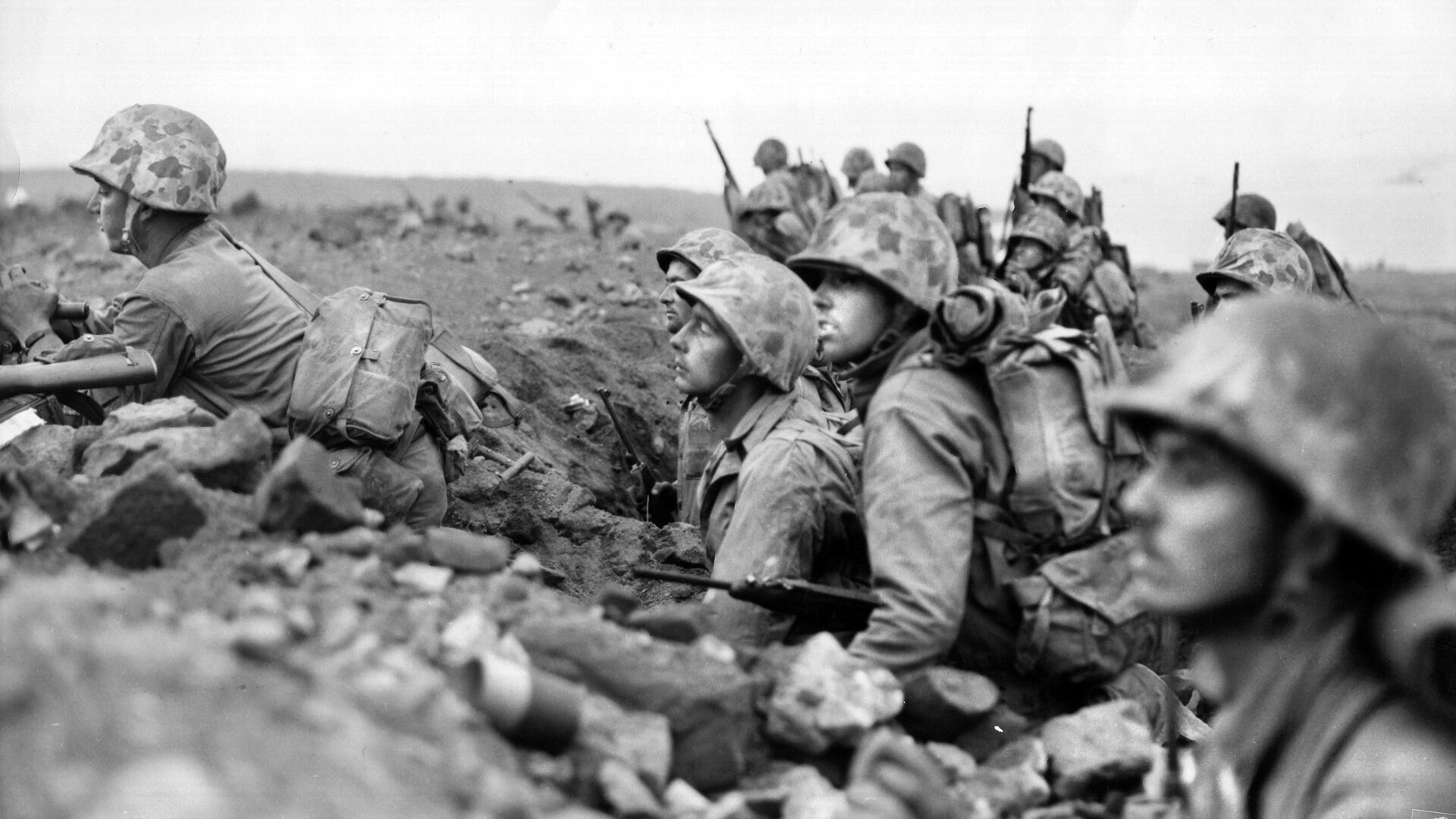
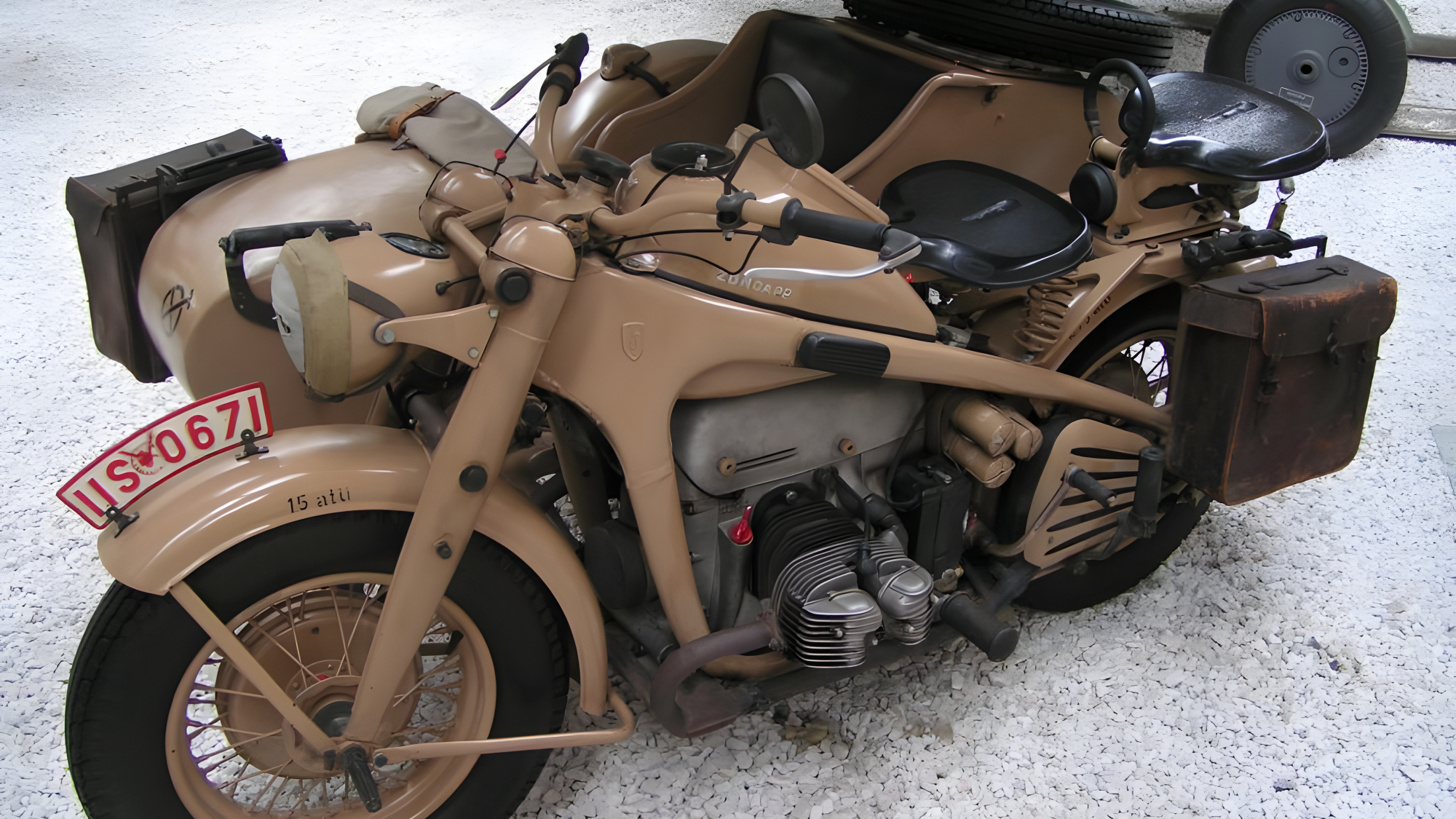
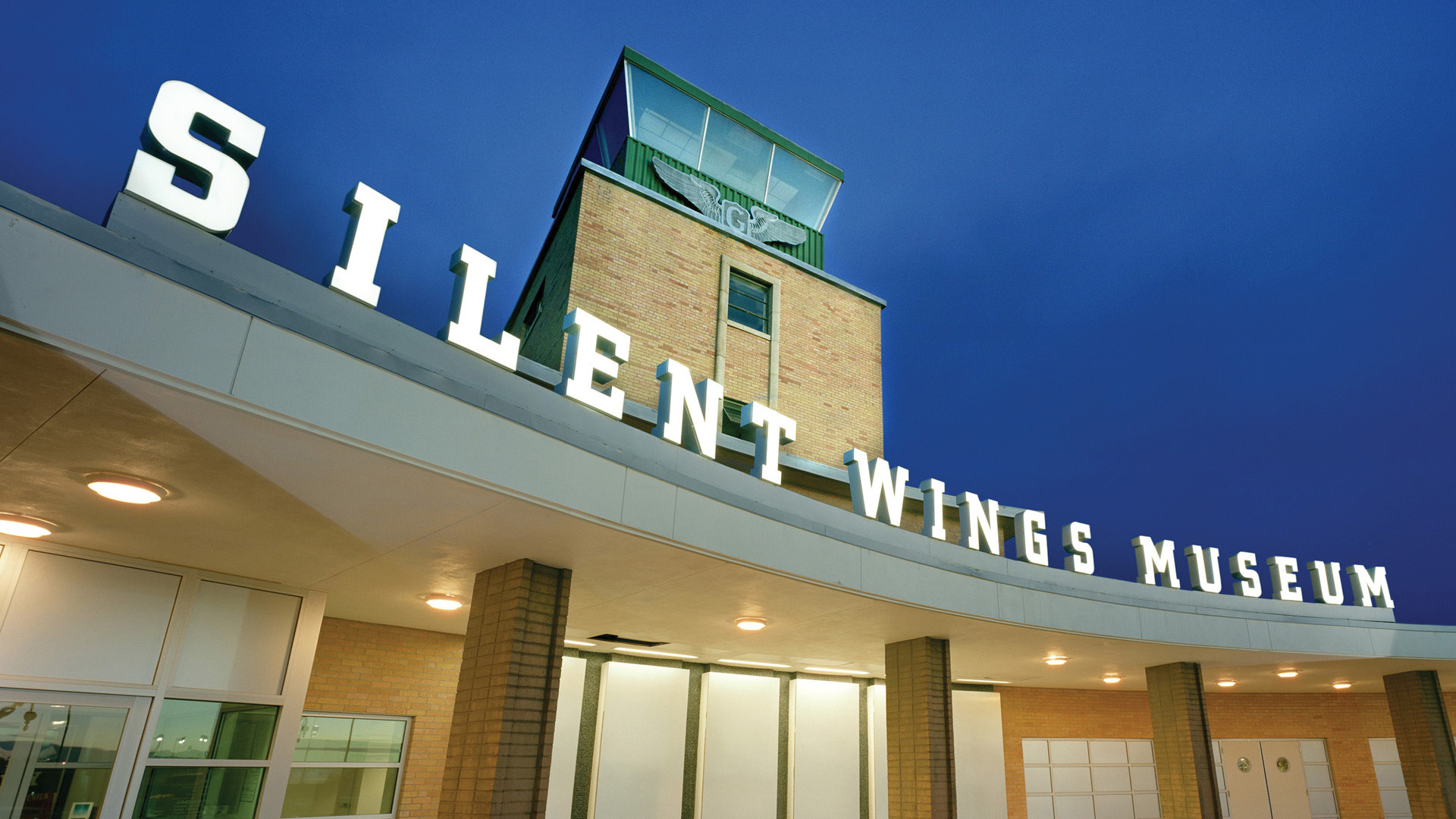
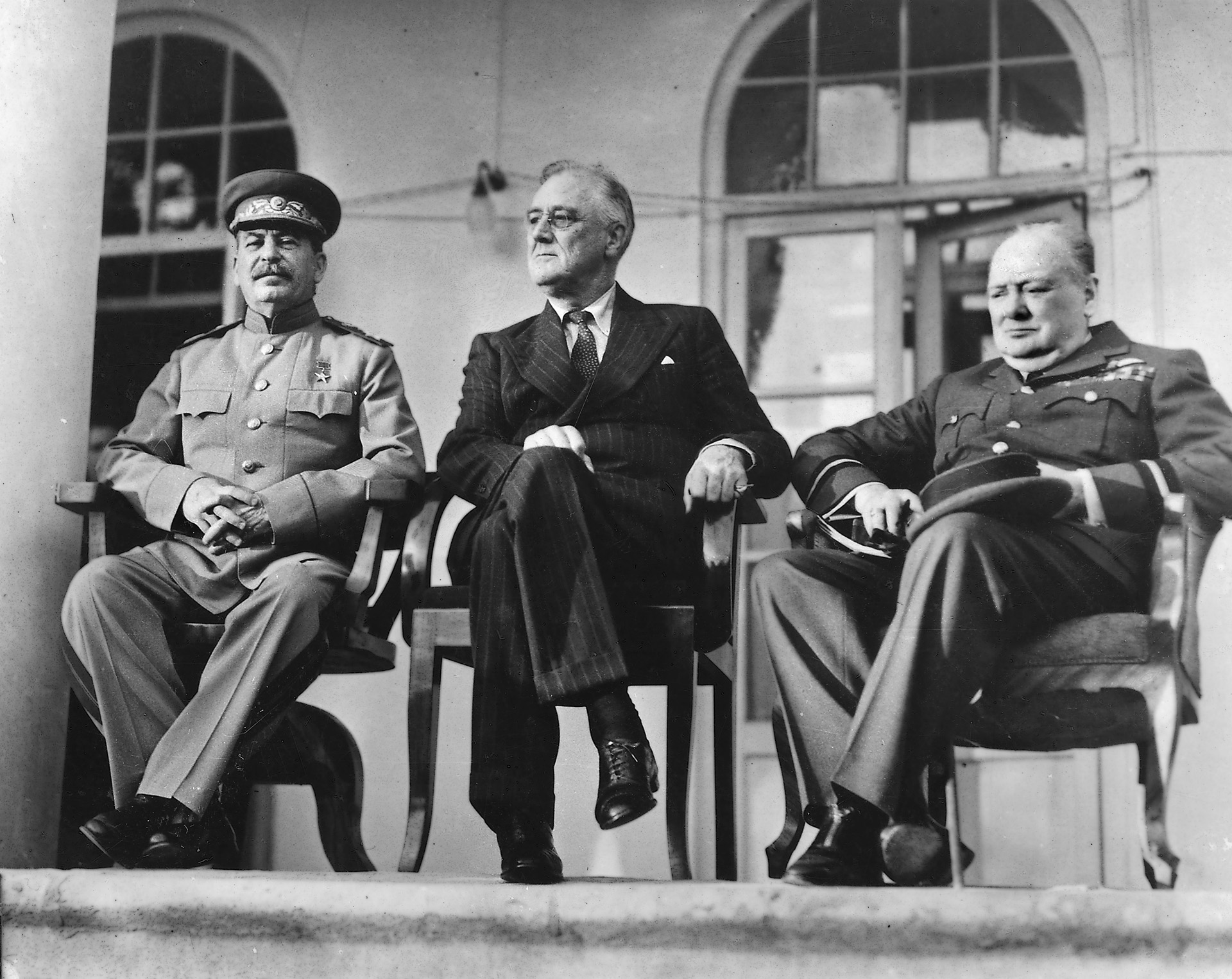
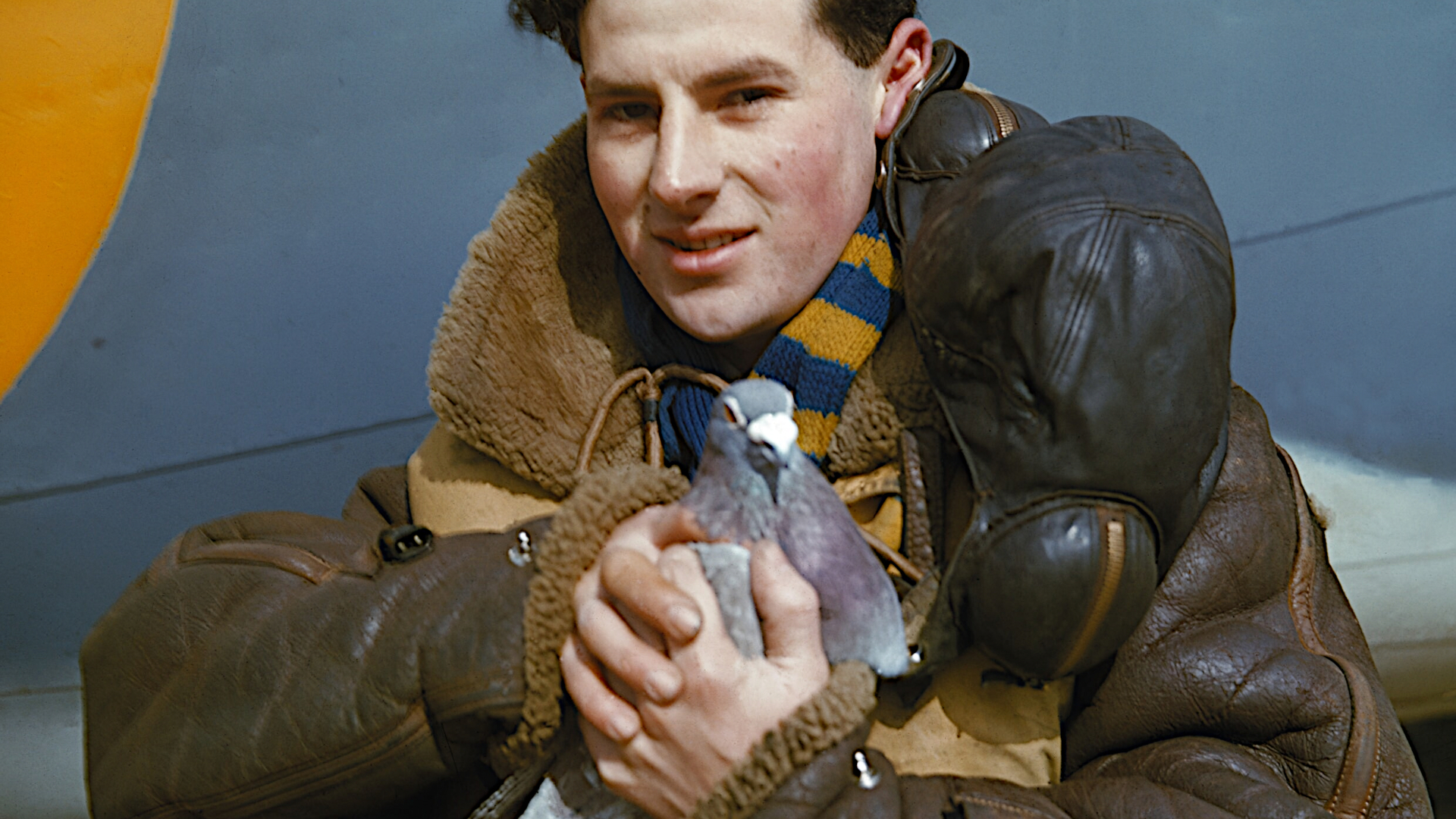
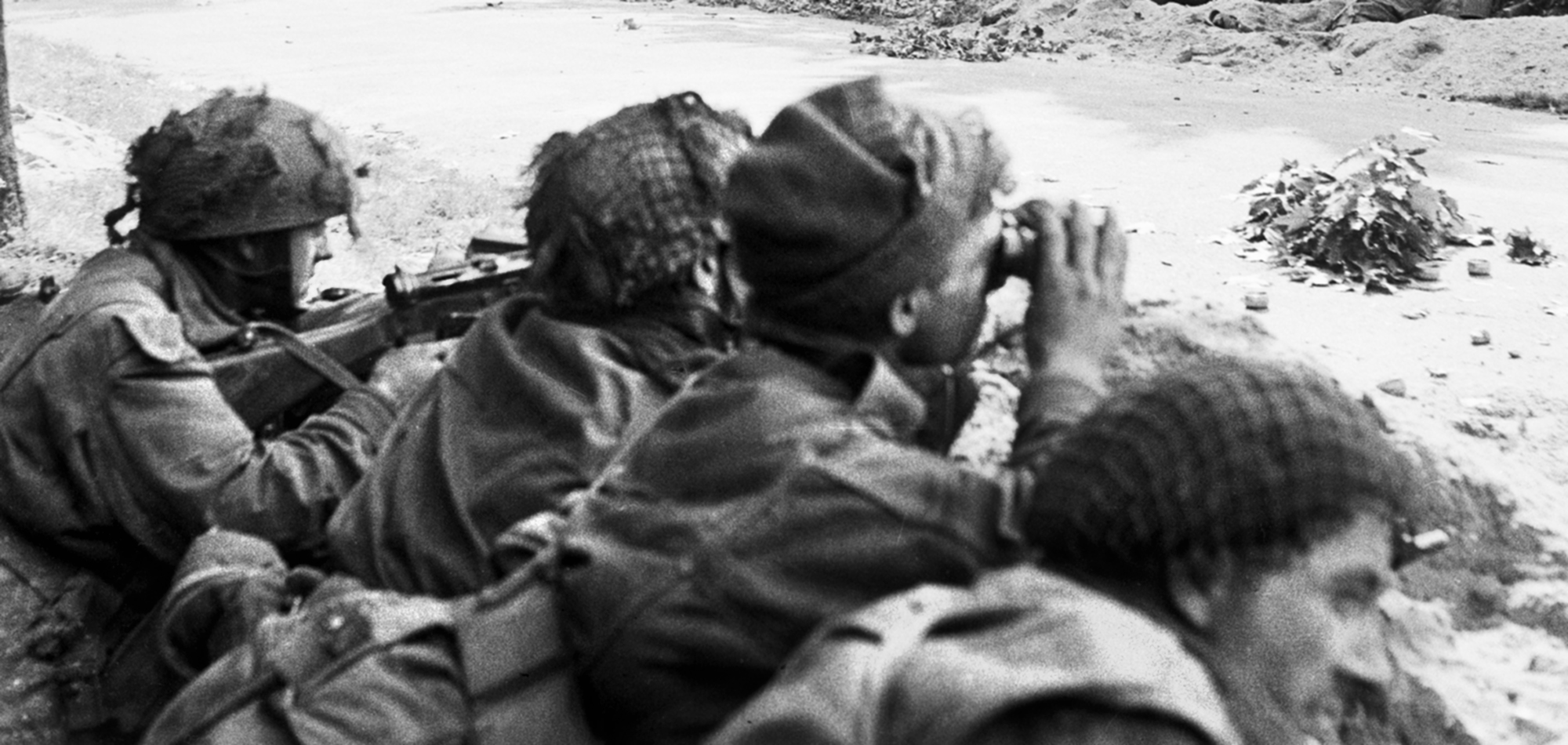
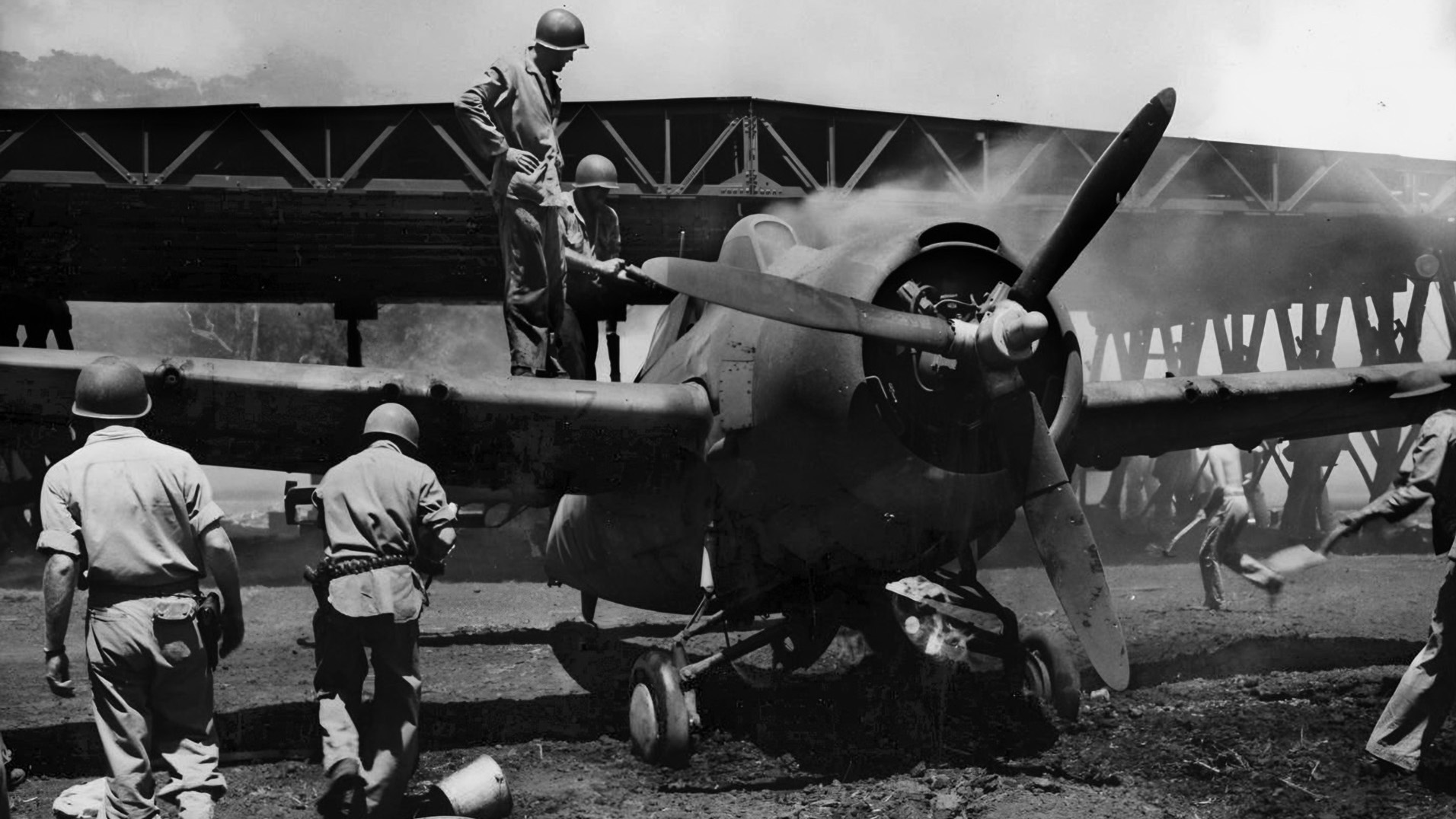
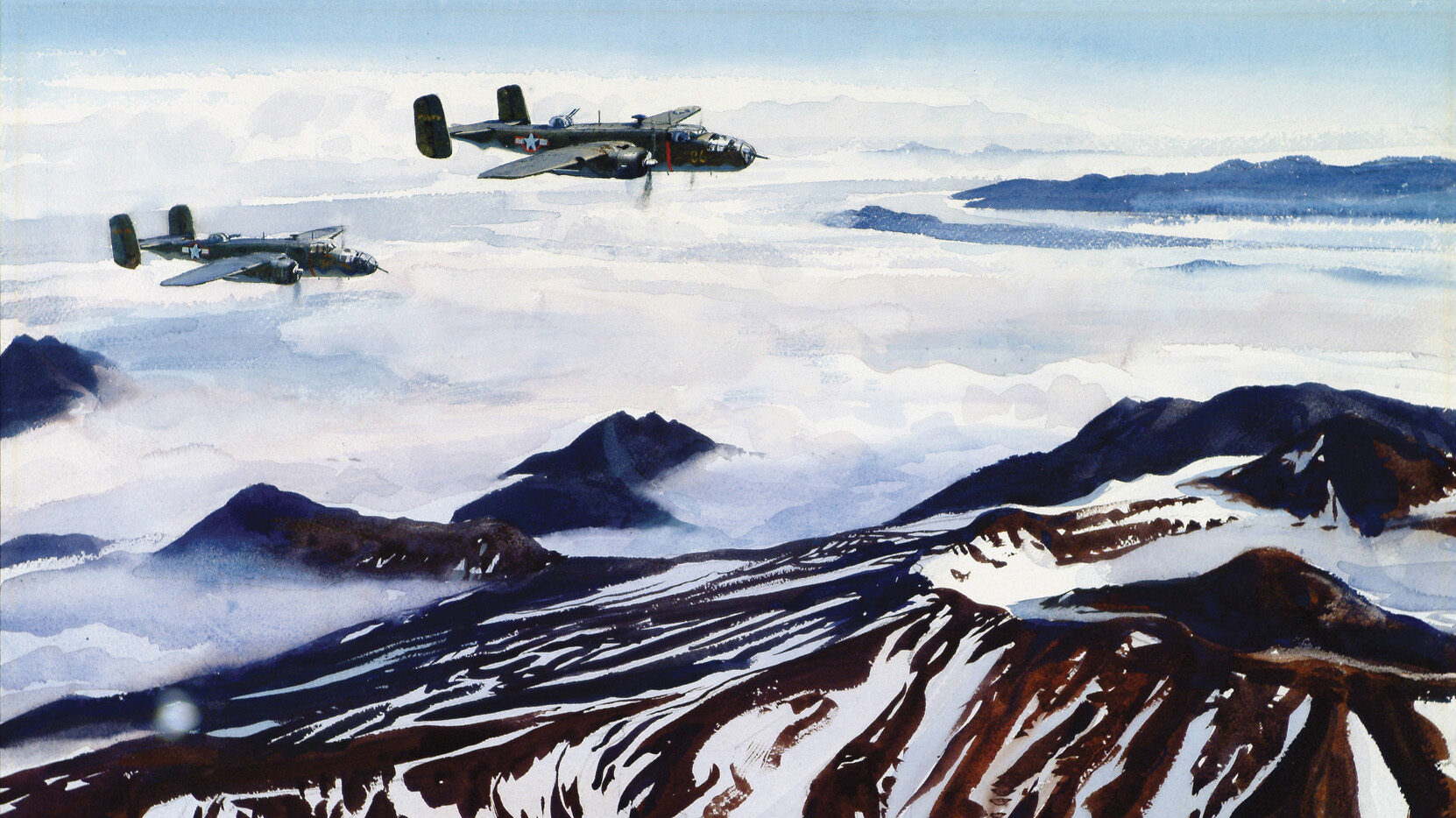
Join The Conversation
Comments
View All Comments